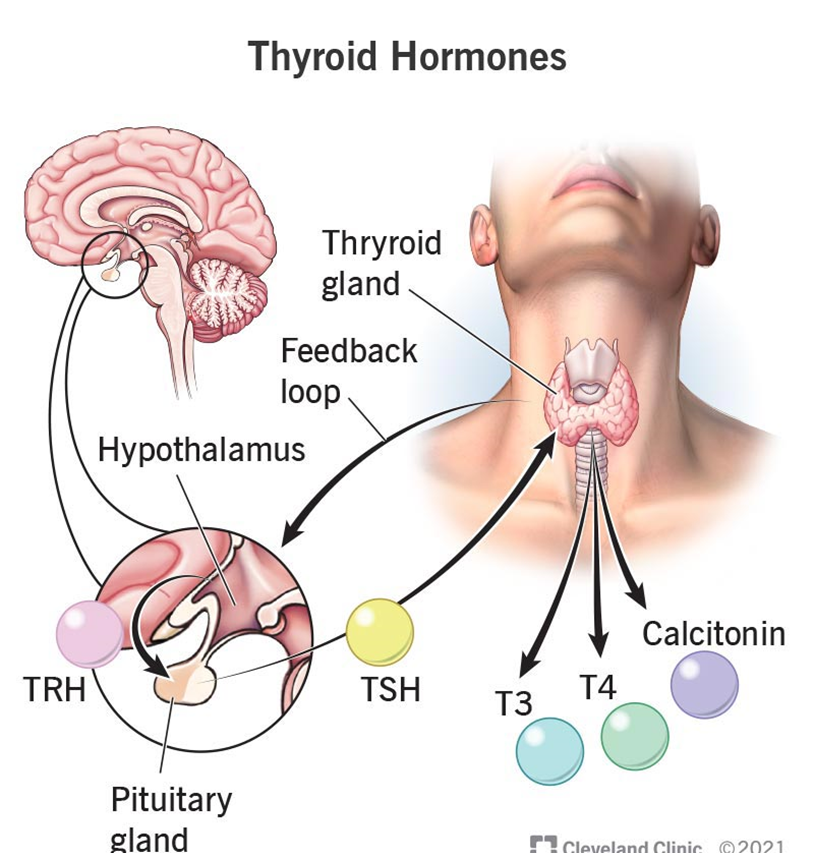A nurse is providing education about insulin management to a client newly diagnosed with type 1 diabetes mellitus. Which of the following statements by the nurse about injection site selection is accurate?
Injections will work most quickly when given in the thigh.
Injections will work most quickly when given in the upper arm.
Injections will work most quickly when given in the buttocks.
Injections will work most quickly when given in the abdomen.
The Correct Answer is D
Choice A reason:
Injections in the thigh are absorbed more slowly compared to the abdomen. The thigh is a common site for insulin injections, but it does not provide the fastest absorption rate. The absorption rate can be influenced by physical activity, as exercise can increase blood flow to the muscles, potentially speeding up insulin absorption. However, under normal conditions, the thigh is not the fastest site for insulin absorption.
Choice B reason:
Injections in the upper arm have a moderate absorption rate. The upper arm is another common site for insulin injections, but it is not the fastest. The absorption rate from the upper arm is generally faster than the thigh but slower than the abdomen. This site can be convenient for injections, especially for those who find it difficult to reach other areas.
Choice C reason:
Injections in the buttocks have the slowest absorption rate among the common injection sites. The buttocks are less commonly used for insulin injections due to the slower absorption rate and the difficulty some individuals may have in administering injections in this area. The high fat content in the buttocks slows down the absorption of insulin.
Choice D reason:
Injections in the abdomen provide the fastest absorption rate for insulin. The abdomen is the preferred site for many people with diabetes because it has a large surface area and is easy to access. The insulin injected into the abdominal area is absorbed quickly into the bloodstream, making it the most effective site for rapid-acting insulin. This is particularly important for managing blood sugar levels around meal times
Nursing Test Bank
Naxlex Comprehensive Predictor Exams
Related Questions
Correct Answer is B
Explanation
Choice A Reason:
Conivaptan hydrochloride is a vasopressin receptor antagonist used to treat hyponatremia associated with SIADH. It works by blocking the action of ADH, thereby promoting water excretion without losing sodium. This medication is appropriate for managing SIADH.
Choice B Reason:
Vasopressin, also known as antidiuretic hormone (ADH), is not appropriate for a patient with SIADH. SIADH is characterized by excessive release of ADH, leading to water retention and hyponatremia. Administering vasopressin would exacerbate the condition by increasing water retention and further lowering sodium levels.
Choice C Reason:
Sodium chloride tablets are used to manage hyponatremia by increasing sodium levels in the blood. This treatment is appropriate for patients with SIADH to help correct the sodium imbalance caused by excessive ADH.
Choice D Reason:
Tolvaptan is another vasopressin receptor antagonist that is used to treat hyponatremia associated with SIADH. It helps to increase serum sodium levels by promoting water excretion while retaining sodium. This medication is suitable for managing SIADH.
Correct Answer is B
Explanation
Choice A: Increased Thirst, Increased Urine Output, and Weight Loss
Increased thirst, increased urine output, and weight loss are symptoms commonly associated with diabetes mellitus, particularly uncontrolled diabetes. These symptoms occur due to the body’s attempt to eliminate excess glucose through urine, leading to dehydration and subsequent weight loss. However, these symptoms are not typically associated with elevated TSH levels, which indicate hypothyroidism.
Choice B: Fatigue, Constipation, Weight Gain
Fatigue, constipation, and weight gain are classic symptoms of hypothyroidism2. When the thyroid gland is underactive, it produces insufficient thyroid hormones, leading to a slowdown in the body’s metabolism. This results in fatigue, weight gain, and constipation, among other symptoms. Elevated TSH levels are a compensatory response by the pituitary gland to stimulate the thyroid to produce more hormones, confirming hypothyroidism.

Choice C: Anxiety, Unintended Weight Loss, Palpitations
Anxiety, unintended weight loss, and palpitations are symptoms typically associated with hyperthyroidism, not hypothyroidism. Hyperthyroidism occurs when the thyroid gland produces excessive thyroid hormones, leading to an accelerated metabolism. This results in symptoms such as weight loss, increased heart rate (palpitations), and anxiety. Elevated TSH levels would not be expected in hyperthyroidism; instead, TSH levels would be low due to negative feedback from high thyroid hormone levels.
Choice D: Shakiness, Sweating, Nausea
Shakiness, sweating, and nausea can be symptoms of various conditions, including hypoglycemia (low blood sugar), anxiety, or panic attacks. These symptoms are not specific to thyroid dysfunction and are not typically associated with elevated TSH levels. Hypothyroidism, indicated by high TSH levels, usually presents with symptoms related to a slowed metabolism, such as fatigue and weight gain, rather than shakiness and sweating.
Whether you are a student looking to ace your exams or a practicing nurse seeking to enhance your expertise , our nursing education contents will empower you with the confidence and competence to make a difference in the lives of patients and become a respected leader in the healthcare field.
Visit Naxlex, invest in your future and unlock endless possibilities with our unparalleled nursing education contents today
Report Wrong Answer on the Current Question
Do you disagree with the answer? If yes, what is your expected answer? Explain.
Kindly be descriptive with the issue you are facing.
